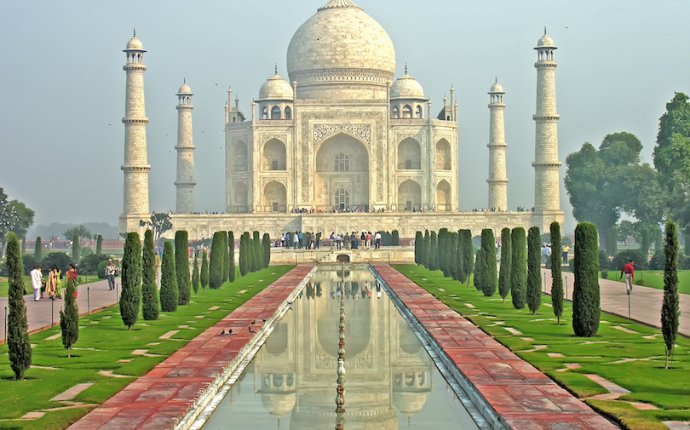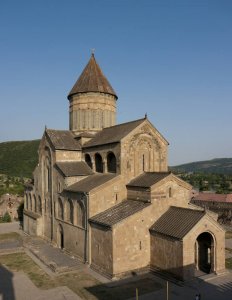
Important monuments of the world

Monuments historiques de Mtskheta
Les églises historiques de Mtskheta, ancienne capitale du royaume de Géorgie, sont des exemples exceptionnels de l'architecture religieuse du Moyen Âge dans la région du Caucase. Elles témoignent du haut niveau artistique et culturel qu'avait atteint cet ancien royaume.
محمية المدينة-المتحف متسخيتا
تشكّل الكنائس التاريخية في متسخيتا، وهي العاصمة القديمة لمملكة جيورجيا، نماذج رائعة للهندسة الدينية في القرون الوسطى في منطقة القوقاز، كما تدلّ على المستوى الفني والثقافي الرفيع الذي بلغته هذه المملكة القديمة.
source: UNESCO/ERI
Description is available under license CC-BY-SA IGO 3.0
姆茨赫塔古城
source: UNESCO/ERI
Description is available under license CC-BY-SA IGO 3.0
Исторические памятники Мцхеты
Древние церкви Мцхеты, бывшей столицы Грузии, представляют собой выдающиеся образцы средневековой религиозной архитектуры Кавказа. Они ярко свидетельствуют о высоком художественном и культурном уровне, достигнутом этим государством. Важнейшие памятники Мцхеты – храм Джвари (конец VI - начало VII вв.), кафедральный собор Светицховели (начало XI в.) и монастырь Самтавро с купольным храмом XI в. и колокольней XV–XVII вв.
source: UNESCO/ERI
Description is available under license CC-BY-SA IGO 3.0
Monumentos históricos de Mtskheta
Las iglesias históricas de Mtskheta, capital del antiguo reino de Georgia, constituyen ejemplos excepcionales de la arquitectura religiosa medieval en la región del Cáucaso. Atestiguan el alto nivel alcanzado por las artes y la cultura en ese reino.
source: UNESCO/ERI
Description is available under license CC-BY-SA IGO 3.0
ムツヘタの文化財群
Historische monumenten van Mtskheta
De historische kerken van Mtskheta – de voormalige hoofdstad van Georgië – zijn goede voorbeelden van middeleeuwse religieuze architectuur in de Kaukasus. De komst van het christendom leidde tot een intensieve bouwactiviteit om aan de eisen van de nieuwe religie te voldoen. Veel van de toen gebouwde monumenten zijn bewaard gebleven zoals het Svetitskhoveli complex. Dit bevindt zich in het centrum van de stad en omvat de 11e-eeuwse kathedraal, het paleis en poorten van de Katolikos Melchizedek uit dezelfde periode en de 18e-eeuwse poorten van Irkali II. De historische monumenten tonen het hoge artistieke en culturele niveau dat bereikt werd door het verdwenen Koninkrijk van Georgië.
Historical Monuments of Mtskheta © OUR PLACE The World Heritage CollectionOutstanding Universal Value
Brief synthesis
The Historical Monuments of Mtskheta are located in the cultural landscape at the confluence of the Aragvi and Mtkvari Rivers, in Central-Eastern Georgia, some 20km northwest of Tbilisi in Mtskheta. The property consists of the Jvari Monastery, the Svetitstkhoveli Cathedral and the Samtavro Monastery.
Mtskheta was the ancient capital of Kartli, the East Georgian Kingdom from the 3rd century BC to the 5th century AD, and was also the location where Christianity was proclaimed as the official religion of Georgia in 337. To date, it still remains the headquarters of the Georgian Orthodox and Apostolic Church.
The favourable natural conditions, its strategic location at the intersection of trade routes, and its close relations with the Roman Empire, the Persian Empire, Syria, Palestine, and Byzantium, generated and stimulated the development of Mtskheta and led to the integration of different cultural influences with local cultural traditions. After the 6th century AD, when the capital was transferred to Tbilisi, Mtskheta continued to retain its leading role as one of the important cultural and spiritual centres of the country.
The Holy Cross Monastery of Jvari, Svetitskhoveli Cathedral and Samtavro Monastery are key monuments of medieval Georgia. The present churches include the remains of earlier buildings on the same sites, as well as the remains of ancient wall paintings. The complex of the Svetitskhoveli Cathedral in the centre of the town includes the cathedral church, the palace and the gates of the Katolikos Melchizedek that date from the 11th century, built on the site of earlier churches dating back to the 5th century. The cruciform cathedral is crowned with a high cupola over the crossing, and there are remains of important wall paintings in the interior. The rich sculpted decoration of the elevations dates from various periods over its long history. The small domed church of the Samtavro Monastery was originally built in the 4th century and has since been subject to various restorations. The main church of the monastery was built in the early 11th century. It contains the grave of Mirian III, the king of Iberia who established Christianity as official religion in Georgia.
The Historical Monuments of Mtskheta contain archaeological remains of great significance that testify to the high culture in the art of building, masonry crafts, pottery, as well as metal casting and processing, and the social, political, and economic evolution of this mountain kingdom for some four millennia. They also represent associative values with religious figures, such as Saint Nino, whose deeds are documented by Georgian, Armenian, Greek and Roman historians, and the 6th-century church in Jvari Monastery remains the most sacred place in Georgia.
Criterion (iii): The historical monuments of Mtskheta bear testimony to the high level of art and culture of the vanished Kingdom of Georgia, which played an outstanding role in the medieval history of its region. They express the introduction and diffusion of Christianity to the Caucasian mountain region and bear testimony of the social, political and economic evolution of the region since the late 3rd millennium BC.
























